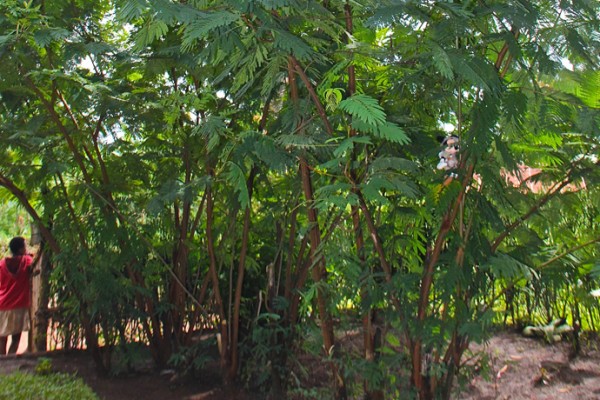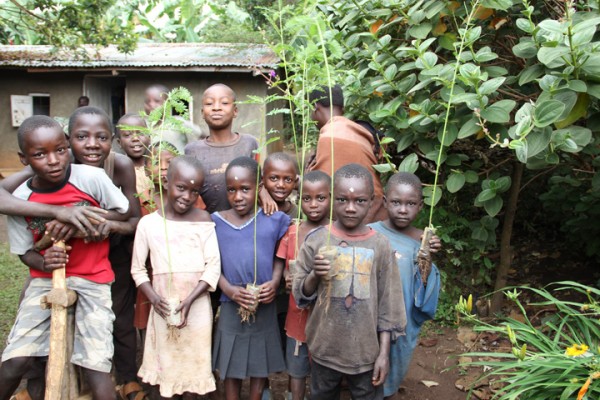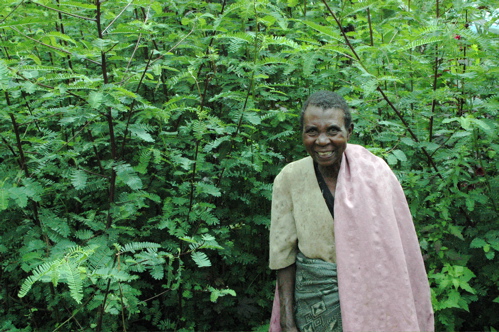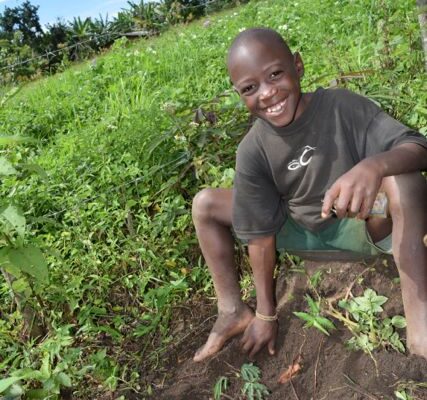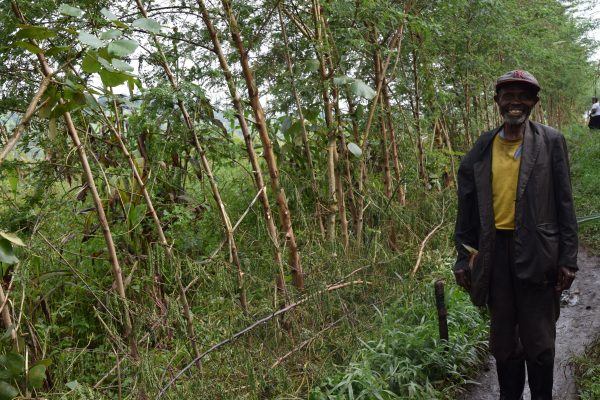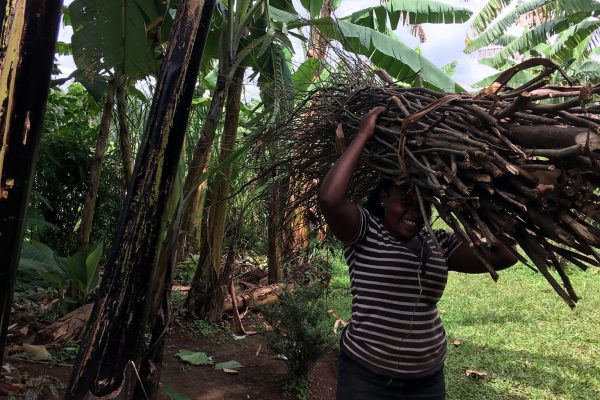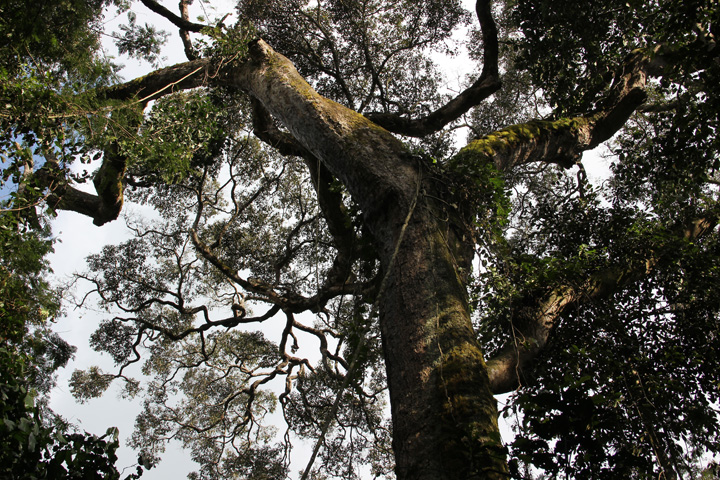
With one of the highest levels of wood-fuel consumption in the world, over 20 million tons annually, the need for a proactive solution to the energy crisis in Uganda is more than urgent. The current program addresses this pressing need for alternative fuel sources, with the aim of protecting biodiversity while securing the energy future of Uganda’s citizens.
NNF promotes fast growing leguminous trees that can be planted close to crops. If farmed properly, these tree can provide immense amounts of fuel wood, even on very small pieces of land. Just one year after planting a seed, some species are over 15 feet tall and ready to be cut for firewood. Others grow slower but regrow more easily when cut. As a bonus, the root nodules fertilize surrounding crops. Truly, amazing trees!
Demonstrating how leguminous trees can produce large amounts of firewood has been a great way for communities to bring conservation practices into their day-to-day lives.
NNF promotes planting firewood crops in tight rows as a boundary around food crops. These fast growing, nitrogen-fixing trees highlight the feasibility of home-grown wood for those with little land to spare. Calliandra, Leucaena and Sesbania species are being promoted.


